One of my favorite clips from the 2016 World Series was Chicago Cubs star, Anthony Rizzo, asking David Ross for advice on how to handle the pressure of the moment. “I can’t control myself right now. I’m an emotional wreck.” Ross, the veteran catcher, responds with this comforting advice, “It’s only going to get worse. Just continue to breathe. That’s all you can do, buddy. Wait until the 9th with this three-run lead.” Rizzo is smiling during the conversation. He’s dancing with fear. Watch Rizzo dancing with fear (0:32)
“No Fear!”
When I was growing up there was a popular shirt that read, “NO FEAR.” The idea was the highest achievers were absent of fear; in essence, they were “FEARLESS.”
Fortunately, we now know much of what we believed was true about fear is actually rubbish. Trevor Ragan does an amazing job in his TedX talk (17:46) bridging the gap between what science says about fear and how we normally discuss it.
Ragan describes how a part of the brain named, Amygdala, is built for survival. The nickname for Amygdala is “The Lizard Brain.” Its job is to generate fear to keep us away from danger. Every person possesses the Lizard Brain; to be fearless is not humanly possible. The problem with the Lizard Brain is that it cannot distinguish between real danger and a challenge. It interprets everything as danger.
According to Ragan, there are four common things that the Lizard Brain interprets as danger that are really just a challenge: Uncertainty, Attention, Change and Struggle.
• Uncertainty: We all know someone who cannot stand their job. They are talented and have a lot to offer. Despite of their loathing, they won’t quit. They prefer the certainty of displeasure over the uncertainty of the unknown.
• Attention: I was in a meeting last week. I was very unclear on a topic that everyone else appeared to understand (or my Lizard Brain convinced me everyone else understood). Instead of asking the question, and having the attention on me, I chose to stay silent. The Lizard Brain won the battle. It kept me safe, however, I didn’t grow.
• Change: The Lizard Brain will fight hard to interpret change as danger. Moving an office, a job relocation, new responsibilities – all of these things can be seen as terrifying. In actuality, they are loaded with opportunity.
• Struggle: If there is a choice between easy or hard, the Lizard Brain will want us to choose easy. If it’s between doing something right now or procrastinating, it’ll choose procrastinating. The Lizard Brain doesn’t want us to delay gratification. Instead, it wants us to choose immediate satisfaction.
It’s important to realize that we are not alone in this battle, everyone has these same internal struggles. It is our choice to begin building up the mental muscles to battle the Lizard.
Coaching/Leading Application:
“It’s much easier to hit from the 3rd base coaching box than it is from the batter’s box.” As a leader, we must remember that it is easier to tell others what they should do compared to actually being the doer. We must remind ourselves that the folks we are leading often lack the life experiences to win the battle over fear. Cracking a joke or saying, “there’s nothing to be afraid of” isn’t enough. Give them permission to feel and acknowledge fear.
Our job is to get them to understand the difference between danger and a challenge. “Is that danger or is it really a growth experience?” “What’s the worst thing that can come from this?” “What will you learn from this if you give it a shot?” Our goal should be to encourage them to build up their life repetitions. The current victory over the Lizard is preparing them for a tougher, more critical battle in the future.
Be a Doer!
One of my mentors and friends, author Rod Olsen, frequently says, “We cannot give away what we don’t possess.” I want to encourage you this week to challenge your relationship with fear. It is so much easier to say, “I know someone who could really use this information.” Instead of this line of thinking, I encourage you to look inward first. When is the last time you won a battle over the Lizard? This week, can make the choice to pursue the hard “right” thing and not the easy “wrong?”
Final Thoughts:
A few years ago, I had the opportunity to ask a big-league manager a question. “Skip, how do you take the pressure off the players so they can perform their best?” He just looked at me with a smile and said, “Mike, pressure’s a big part of what we do. You can’t take that away. You just have to learn to dance with it!”
This week, join me on the dance floor moving with fear. We are not alone. Elite performers, like Anthony Rizzo, are also in the struggle. When we feel fear, we need to refine the feeling as something positive. The fear is actually telling us that we are on to something special. Push forward. Keep going.
Let’s battle the Lizard this week,
Mike
P.S. Ragan suggests asking this question, “When has fear robbed you of an opportunity to grow?”
